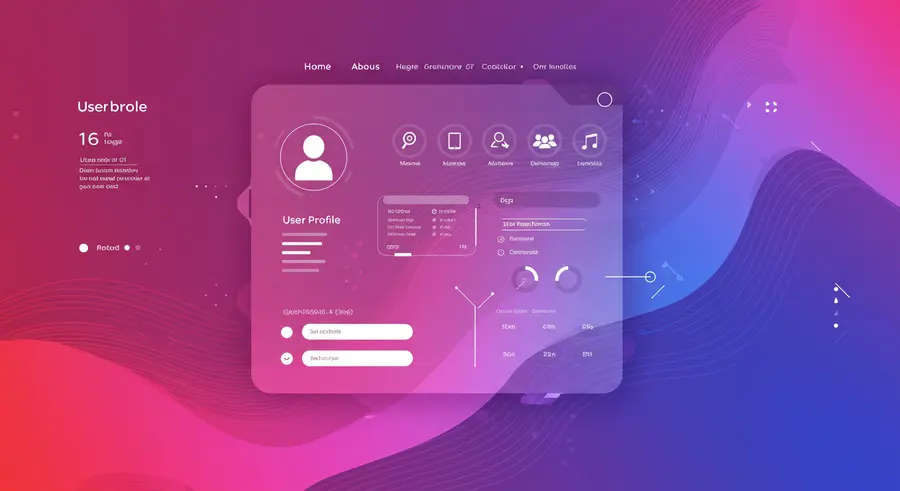Appearance

Hello, fellow tech enthusiasts and web innovators! 👋 Today, we're diving deep into one of the most exciting frontiers in web development: AI-Powered Personalization. In an increasingly crowded digital landscape, creating unique and engaging experiences for every user isn't just a luxury—it's a necessity. And that's where Artificial Intelligence shines!
Why Personalization? 🤔
Think about it: when you visit a website or use an app, how much more likely are you to stay and engage if it feels like it was designed just for you? AI-powered personalization moves beyond simple user preferences, leveraging vast amounts of data to predict needs, anticipate desires, and deliver content, products, and services that truly resonate. It's about transforming a generic interaction into a tailored journey.
The Magic Behind the Scenes: How AI Makes it Happen 🛠️
AI employs various techniques to achieve this magic:
- Machine Learning (ML): At its core, ML algorithms learn from user behavior patterns. This includes everything from clicks and scrolls to purchase history and time spent on a page. The more data they process, the smarter they become at understanding individual preferences.
- Natural Language Processing (NLP): For content-heavy sites, NLP allows AI to understand and process human language. This means more relevant search results, smarter chatbots, and content recommendations that truly match a user's interests.
- Predictive Analytics: By analyzing past data, AI can predict future behavior. This is invaluable for recommending products a user is likely to buy, suggesting articles they'll want to read, or even predicting when they might churn.
- Computer Vision: In e-commerce and visual content platforms, computer vision can analyze images and videos to understand their content, allowing for more precise visual recommendations.
Practical Applications in Web Development 🚀
Let's explore some real-world examples of how AI is revolutionizing web experiences:
Personalized Content Feeds:
- Scenario: News websites or social media platforms.
- AI in Action: Algorithms analyze your reading habits, preferred topics, and interactions to curate a unique news feed or social timeline. This keeps you engaged with content you genuinely care about, reducing information overload.
- Example: Imagine a news site where the homepage automatically highlights articles on "Quantum Computing" and "Sustainable Energy" because you've consistently read and shared content on these topics.
Dynamic Product Recommendations:
- Scenario: E-commerce stores.
- AI in Action: Based on your browsing history, past purchases, and even the behavior of similar users, AI suggests products you're highly likely to be interested in. This goes beyond "customers who bought this also bought..." to truly personalized suggestions.
- Example: An online fashion retailer recommending a specific style of shoe because the AI has identified your preference for minimalist designs based on your previous purchases and items you've viewed.
Intelligent Chatbots and Virtual Assistants:
- Scenario: Customer support, lead generation, or interactive guides.
- AI in Action: AI-powered chatbots use NLP to understand user queries, provide instant, accurate responses, and even complete complex tasks like booking appointments or processing returns. They learn from every interaction, becoming more efficient over time.
- Example: A travel website's chatbot that can not only answer questions about flight times but also suggest personalized vacation packages based on your past travel history and budget.
Adaptive User Interfaces (UI):
- Scenario: Any web application striving for optimal usability.
- AI in Action: The UI can dynamically adjust its layout, features, or content presentation based on the user's behavior, device, or context. This creates an interface that feels intuitive and effortless.
- Example: A project management tool that automatically surfaces the most relevant tasks and collaborators to the top of your dashboard based on your current project focus and deadlines.
Enhanced Search and Navigation:
- Scenario: Large content repositories or complex applications.
- AI in Action: AI algorithms improve search accuracy by understanding intent rather than just keywords. They can also optimize navigation paths, guiding users more efficiently to their desired information or features.
- Example: A knowledge base that provides highly relevant search results even with vague queries, understanding the underlying intent and prioritizing popular or highly rated articles.
The Future is Personalized 🌐
The integration of AI into web development is no longer a futuristic concept; it's here, and it's rapidly evolving. As AI models become more sophisticated and accessible, the possibilities for creating deeply personalized, engaging, and efficient web experiences are endless.
For more insights into cutting-edge AI developments, particularly at the device level, check out our catalogue entry on The Future of Edge AI. Edge AI plays a crucial role in enabling faster, more private personalization by processing data closer to the user.
What are your thoughts on AI-powered personalization? Share your experiences and ideas in the comments below! 👇